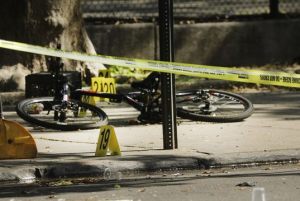from The Wall Street Journal,
7/23/21:
A criminologist argues that last year’s unprecedented rise in killings was the result of treating policing as a problem to be solved, rather than an essential part of public order.

A summary of the article follows:
The rise in murders in the U.S. in 2020 was unprecedented. Complete nationwide data for the year won’t be available until September, but we already know that in 70 cities and counties that account for a fifth of the U.S. population, the murder rate rose by 35%. The largest previous increase on record was 13% in 1968—a year that, like 2020, was marked by civil unrest, often triggered by police misconduct, leading to demands for police reform.
In the years before 2020, the murder rate had begun to edge up after a two-decade decline that reached a historic low in 2014. Even so, it rose just 15% in the next five years combined.
Why was 2020 so dramatically different?
Some of these factors mattered less than is commonly thought, but others mattered a great deal, especially in their combined impact on policing.
Murder in America remains a relatively rare event, far below its 1991 peak. In 2020, one was far less likely to be murdered in the U.S. than to die from Covid-19, a drug overdose, a car crash or suicide. In many neighborhoods, murder is almost unheard of. But where it happens regularly, it has a powerful and destructive impact. The residents of such neighborhoods are often poor and disproportionately Black and Hispanic.
No single cause can explain the spike in murder in 2020.
Economic factors in general seem to have little impact on violent crime.
The Covid lockdowns of 2020 are also a weak explanation for surging violence. Such lockdowns took place around the world, but the dramatic rise in murders is a phenomenon unique to the U.S. ... the massive increase in violence in the U.S. started not with the pandemic but with the death of Mr. Floyd in late May.
What changed in 2020 is that policing itself came under unprecedented pressure, brought on by the murder of Mr. Floyd.
Such external pressure, combined with a pullback on the part of police departments wary of intensified scrutiny, has resulted in less proactive policing in many cities. In 2020 arrests dropped another 37%, and this year they are down another 6% so far, even as shootings and murders in Los Angeles continue to rise.
New York City, where murder increased 47% in 2020, provides a clear case of how local factors came to a head.
The power of deterrence is often overrated, but the effective withdrawal of so much of the criminal justice system in New York City was bound to have an effect.
A number of the cities with the biggest increases in murders in 2020 were associated with particularly controversial policing incidents.
- Murders increased by 69% in Minneapolis
-and by 99% in Louisville
-In Seattle, ... the murder rate increased 41%.
Civil unrest and calls for police accountability don’t directly cause an increase in murders and other violence. Onerous restrictions on the police can lead to the worst of both worlds: poorer policing and more violence.
The first step on the path forward is heightened accountability—not just for police misconduct, though that is essential, but for crime prevention. Mayors, city councils and police chiefs must accept responsibility for dramatic increases in street violence under their leadership, and they must be ready to defend the legal and necessary use of force by police. Urban electorates are looking for such leaders, as the victory of NYPD veteran Eric Adams in the recent New York City primary for mayor suggests.
More From The Wall Street Journal (subscription required):




